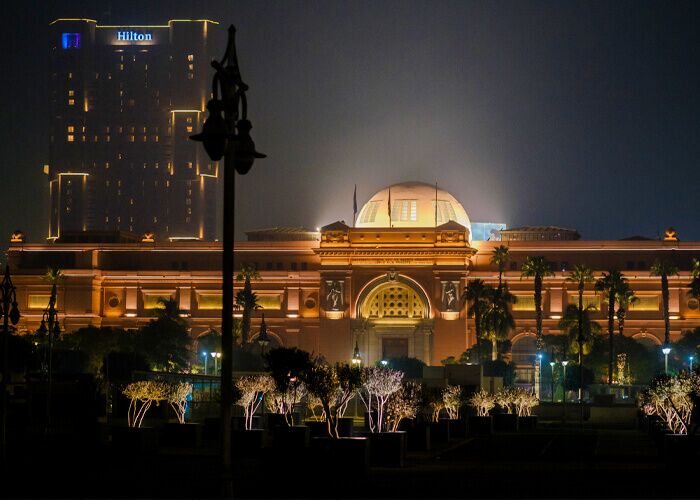In Cairo, don’t miss the Egyptian Museum!
Among the topics covered:
The Ancient Museum’s Interesting History
Highlights of the First Floor
Tips for Exploring the First Floor’s Royal Mummy Room
The Archaeological History of the Museum
If you ever get the chance to visit Cairo and the Museum of Egyptian Antiquities, do do.
Over 3,000 years of Egyptian history from the Old Kingdom to the Roman colonization of Egypt are represented in this museum, which is a must-see for anybody traveling to Egypt.
To see all of the exhibits at this museum, you would need nine months if you spent one minute on each one.
Spend at least a morning (or two, if possible) exploring the museum’s many highlights, even though the exhibits are dimly lit and badly displayed.
Exhibits on the ground floor are arranged in chronological order, while those on the upper story are arranged in theme order, traveling clockwise from the entry hall.
The First Floor’s Most Popular Attractions
Two of the earliest examples of Egyptian art include the Narmer Palette depicting King Menes unifying Egypt and the museum’s oldest statue, depicting a sitting King Zoser who was found near his step pyramid at Saqqara.
During the reign of King Menes, Egypt was unified. The Narmer Palette is a historical record of this event.
Both the black statue of Khafre the Pyramid Builder and the wooden figure known as Sheikh al Balad (Village Chief), which towering over the whole construction, are masterpieces of their respective fields.
The exquisite Rahotep and Nofret double statue, whose colors have been exceptionally well preserved despite their antiquity, is the room’s center point.
Stranger yet is the statue of the dwarf Seneb and his family, which has his children standing in front of him to conceal his slender limbs.
An incredibly beautiful shrine to Hathor houses a life-size statue of the cow goddess in Luxor, Egypt, near the Hatshepsut Temple, Deir al Bahari.
In the museum, you’ll find an exhibit devoted to the revolutionary realistic art made by the rebellious Pharaoh Akhenaton during his reign.
Everything starts on the First Floor.
The treasures of Tutankhamun, which are among the museum’s many world-class exhibits, are definitely its most popular draw.
Nine years after his death, English archaeologist Howard Carter (1874-1939) found his perfectly preserved tomb, which was crammed with his beloved possessions and meant to keep him company in his last resting place.
Carter was Akhenaton’s son-in-law, and he governed Egypt for a total of 9 years.
If you want to see the most priceless artifact in the whole museum, you may have to stand in line in Room 3.
In addition to Tutankhamun’s gold death mask, his gilded burial chamber and his magnificent treasures are also worth a trip to the Valley of the Kings.
Mummy Room of the Royals
Mummies of Egypt’s most renowned pharaohs, such as Seti I, his son Ramses II, and Tuthmosis II, are shown in Room 56.
The Best Ideas
In order to avoid the crowds, plan your visit to come before or after 10 a.m. as this is when most of the tour buses are scheduled to arrive.
Because there is so much to see, allow at least two and a half days to see it all, maybe exploring one level at a time.
Only Room 34 has Graeco-Roman art, and it’s badly labeled and boring compared to the rest of the museum’s eastern wing, which is largely Late Period.
– Sarcophagi on the first level’s western and astern inner galleries, as well as the outer western galleries, should be avoided for the same reasons (except Room 14).
These are the hidden riches you’ve been looking for:
The Fayoum Portraits, a group of graeco-roman mummies with exquisitely painted face masks found in Room 14 on the first floor, are not well known. Visit the museum when you’re in Egypt.

